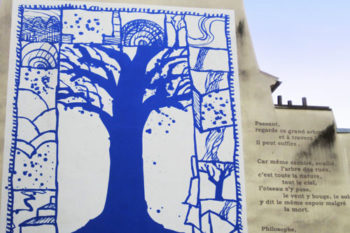When you visit the Eiffel Tower, do not forget to look for the life-size bust statue of Gustave Eiffel.
You will find it next to the ticketing office but it is easy to miss it.
Eiffel was one of the world specialists in metal construction. He has left his name to the most famous tower in the world, but be aware that his workshops have produced other metal bridges and viaducts.
Gustave Eiffel (1832-1923) was born in Dijon in the département of Côtes-d’Or in Eastern France. His father, who came from Westphalia in Western Germany, changed his surname Bönickhausen (unpronounceable to the French!) in Eiffel, the name of his native village.

Gustave Eiffel graduated in science at the Ecole Centrale des Arts et Manufactures in Paris (in French), a prestigious engineering school. He landed his first job as project manager in a company based in Bordeaux (south-west France) and specialized in the design of metal railway bridges.
He then started his own construction company. The lightness, appearance and reduced cost of one of his projects earned him the contract for the Maria Pia Bridge (1877) that connected Porto to Vila Nova in Portugal until 1991. This launched his career and worldwide fame.
The Viaducts of Rouzat and Bouble, and the famous Gabarit Viaduct (1885) in Central France were built in his workshops.
Eiffel participated in the construction plans of the Panama Canal but suffered the negative consequences related to the bankruptcy of the French company in charge of the project.
He recovered from this disaster and built the weight-bearing vertical steel beams embedded in the base of the Statue of Liberty (by Bartholdi) in 1886, a gift from the French Republic to the USA. From 1887 he devoted his time to building the Eiffel Tower for the Universal Exhibition of 1889. He also built the Ruche (now in the 15th district of Paris) for the Universal Exhibition of 1900, a huge circular three-storey building that looks like a beehive (hence its name) and that replaced the Bateau-Lavoir in Montmartre (artists’ studios).
Gustave Eiffel’s name went down in history as his tower became the iconic symbol of Paris for millions of tourists worldwide… and French people too.
Gustave Eiffel was buried in the cemetery of Levallois-Perret in the western outskirts of Paris.




